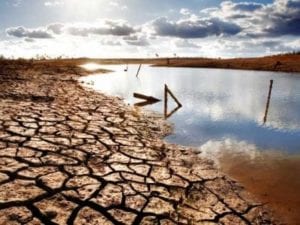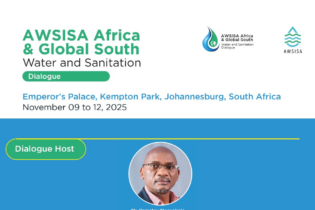 The country’s average dam levels are steady at 53.3% week on week, but the back of the drought is still not broken, reports the Department of Water and Sanitation (DWS).
The country’s average dam levels are steady at 53.3% week on week, but the back of the drought is still not broken, reports the Department of Water and Sanitation (DWS).
Looking at the figures
The Algoa System has five dams serving Nelson Mandela Bay. This week it stands at 72.2% compared with 72.9% last week – a decrease of 0.7%. The Amathole System consists of six dams serving Buffalo City. It now stands at 81.9% compared with 82.5% last week, a decrease of 0.6%. At the Cape Town Dams System there are 6 dams serving mainly the City of Cape Town. The system this week increased by 1.3% to 58.2%, where the Voelvlei Dam has increased by 2.7% to 61.3%. The Clanwilliam Dam is at 99.9%. With all of this activity, water restrictions are to remain in place. The Umgeni Dam system with five dams, serving mainly eThekwini and Msinduze, is at 46.8% compared with 47.1% last week. This shows a decrease of 0.3%. The Hazelmere Dam is at 56.6% showing an increase of 4.3% week on week. Transfers from the uThongathi River are still taking place. The Nagel Dam has decreased by 2% to 68.4%, while the Midmar Dam has increased by 0.1% to 45.8%. Considering that KwaZulu-Natal has borne the brunt of the drought, other KwaZulu-Natal dams which remain dangerously low are: Klipfontein at 13%, Hluhluwe at 18.9%, and Goedertrouw at 18.1%. All have declined slightly. The current restrictions for Goedertrouw Dam will remain at 15% for industry, 40% for domestic and 80% for irrigation.The Vaal River System has 14 dams and serves mainly Gauteng, Sasol and Eskom. It has decreased by 0.2% to 54%. The system was at 75.3% last year. Katse Dam now stands at 47.4% which is a decrease of 0.2% from the previous week. Vaal Dam decreased to 34%, indicating a decrease of 0.5% week on week. The Sterkfontein is up by 0.2% to 89.7% and the Grootdraai is steady 79.1%. Restrictions are now in place for the Vaal River system.
On the Orange River, the Gariep Dam is at 55.7% showing an increase of 1.1% and Van Der Kloof Dam is at 65.7%, indicating a slight increase of 0.2%. For the Polokwane System with two dams, there was a decrease of 0.2% to 36.4%. The Crocodile West System has six dams serving mainly Tshwane, Madibeng and Rustenberg. In the week’s measurements it showed a slight decrease of 0.2% to 95%. The Bloemfontein System comprises of four dams serving mainly Mangaung. This week’s 37.1% compared with 36.7% last week showed a slight improvement of 0.4%. The DWS continues to monitor 211 dams on a weekly basis. Of these at the moment 13 dams are below 10%, 59 dams are below 40%, and 23 dams are above 100%. In relation to the national storage, the situation is still a great cause for concern. “The country needs to continue to intensify the adherence to restrictions where applicable to prevent a spike in usage during the early spring,” says the DWS. Despite the current drought condition and low water levels in some of the country’s dams, the DWS is of the opinion that with continued water saving and adherence to the necessary restrictions, the available water can carry the country until the anticipated summer rains in the next season.






